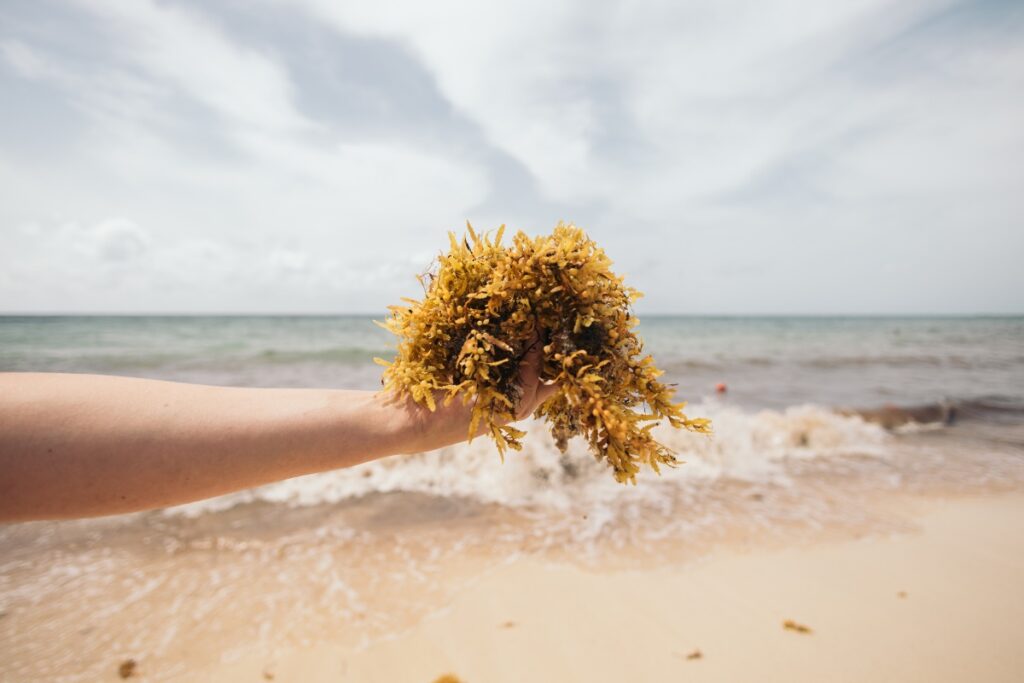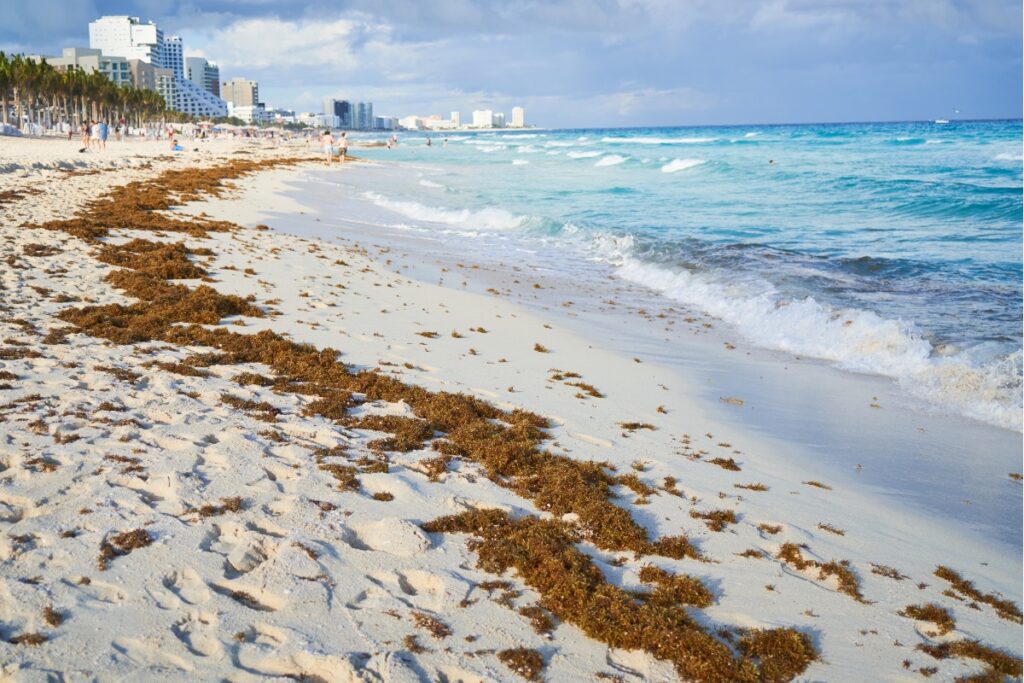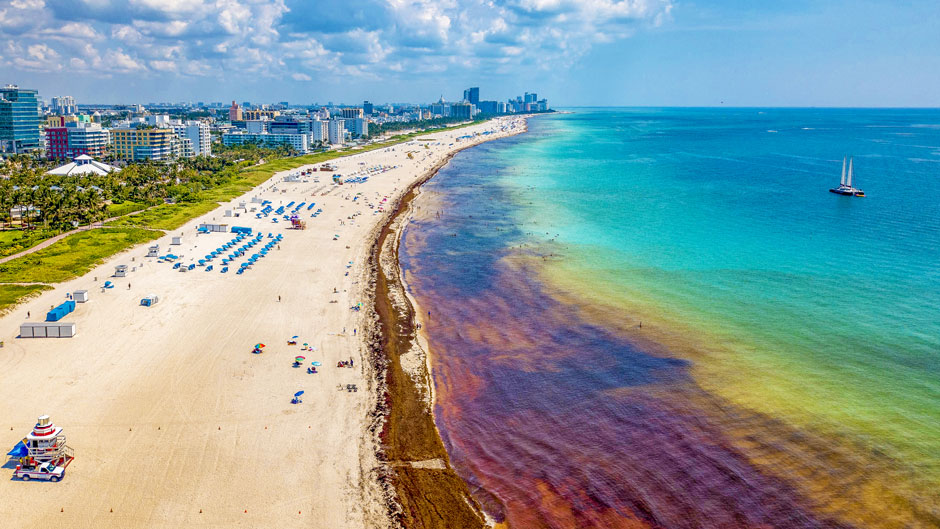If you’ve visited Florida’s beaches lately, you may have noticed something a bit… off. It’s not sharks or hurricanes causing concern this year. Instead, a slimy, smelly intruder known as sargassum seaweed is washing up on Florida’s coastline—and it’s arriving in record-breaking amounts.
Here’s everything you need to know about Florida’s latest beach crisis, why it’s happening, and what it means for locals, tourists, and marine life alike.
What Exactly is Sargassum?

At first glance, sargassum looks like ordinary seaweed, just brown, bubbly, and not particularly appealing. In reality, it’s a type of macroalgae that thrives floating freely across the ocean surface. Typically, sargassum is beneficial—it provides habitat and protection for small marine life, like juvenile fish, crabs, and even young sea turtles.
The problem isn’t the sargassum itself; it’s the massive quantities now hitting Florida’s shores. When these massive seaweed rafts wash ashore, they rot quickly, releasing hydrogen sulfide gas that smells like rotten eggs, irritating eyes, throats, and lungs, and generally creating an unpleasant beach experience.
Why Is This Happening Now?
The culprit behind this unprecedented invasion is known as the Great Atlantic Sargassum Belt. Stretching roughly 5,000 miles from West Africa across the Atlantic and into the Caribbean, this immense bloom of seaweed is fueled by a combination of environmental factors:
- Warmer Ocean Temperatures: Climate change is warming oceans, creating ideal conditions for algal blooms.
- Fertilizer and Sewage Runoff: Nutrient-rich runoff from major rivers like the Amazon and the Mississippi is essentially fertilizing these massive blooms, causing explosive growth.
- Ocean Currents and Winds: Changes in ocean circulation patterns are pushing this seaweed directly towards the Caribbean and Florida.
Scientists from the University of South Florida’s Optical Oceanography Lab noted that April 2025 set an alarming new record, with approximately 31 million metric tons of sargassum floating across the Atlantic—40% more than any previously recorded high.
How Bad is it for Florida’s Beaches?

The consequences of this sargassum explosion reach far beyond just smelly beaches. Coastal communities in Florida are struggling economically, environmentally, and socially.
Economic Impact
Tourism drives Florida’s economy, generating billions of dollars annually. But tourists aren’t exactly eager to spend their beach vacations navigating stinky piles of rotting seaweed. In 2023 alone, Miami-Dade County spent over $3 million removing sargassum, and that number is expected to climb significantly in 2025.
Environmental Impact
Large piles of decomposing sargassum not only pose health risks to humans—particularly those with respiratory conditions—but also threaten marine wildlife. During Florida’s peak sea turtle nesting season (March to October), the heavy accumulation of seaweed can trap turtle hatchlings and block nesting sites, dramatically reducing their survival rates.
Impact on Local Boaters and Fishermen
It’s not just the beaches feeling the impact. Local fishermen and boaters report sargassum clogging boat motors, fouling fishing gear, and piling up near inlets, making it challenging and costly to reach open waters.
How Florida Cities are Responding to the Sargassum Crisis
Cities across Florida are tackling the seaweed siege with a variety of creative approaches:
- Miami-Dade County employs daily crews with specialized tractors and rakes to clear beaches.
- Fort Lauderdale is composting sargassum into nutrient-rich soil for city landscaping and parks.
- Hallandale Beach removes seaweed near tourist-heavy areas but leaves natural piles to nourish local wildlife, following state environmental guidelines to protect sea turtle nests.
- Boca Raton coordinates cleanup with daily sea turtle nest surveys, ensuring delicate habitats aren’t disturbed.
- Key West has partnered with the University of Florida to research sustainable solutions like composting and repurposing the seaweed for agriculture.
Some regions, such as Palm Beach County, considered using floating offshore barriers similar to those used in Cancún and Tulum, but ultimately decided against it due to strong wave action and potential impacts on coral reefs and marine wildlife.
Is This the New Normal?
With ocean temperatures rising and nutrient runoff increasing, scientists fear massive sargassum blooms could become Florida’s annual summer challenge. While sargassum isn’t toxic like Florida’s infamous red tide algae, it presents significant problems nonetheless, affecting everything from tourism to marine ecosystems.
So What Can We Do?
Unfortunately, there’s no quick fix for a 31-million-ton seaweed problem. But we can adapt smarter: supporting cities as they develop sustainable cleanup methods, monitoring local beach conditions before planning trips, and advocating for broader environmental action to tackle nutrient runoff and climate change.
As we adjust to this “new normal,” awareness and adaptation will be key in preserving Florida’s beaches as places we can still enjoy—without holding our noses.

